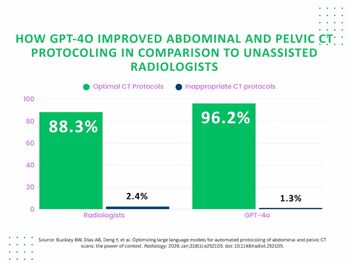
Singapore Radiological Society holds its 19th Annual Scientific Meeting
The 19th Annual Scientific Meeting of the Singapore Radiological Society was jointly organized with the College of Radiologists, Singapore, from Feb. 25 through 28. I have attended this meeting the past three years as it gives me ample opportunity to interact with my colleagues and feel the pulse of radiology in and around the region. Each year, the focus is on a hot topic, and this year’s topic was nuclear medicine and molecular imaging.
The 19th Annual Scientific Meeting of the Singapore Radiological Society was jointly organized with the College of Radiologists, Singapore, from Feb. 25 through 28. I have attended this meeting the past three years as it gives me ample opportunity to interact with my colleagues and feel the pulse of radiology in and around the region. Each year, the focus is on a hot topic, and this year’s topic was nuclear medicine and molecular imaging.
The coordination between the organizers and the management team was commendable, complete with excellent hospitality arrangements for both local and international speakers.
There was enough seating in the fairly capacious auditorium for the didactic lectures and scientific presentations. Parallel track sessions for radiographers and nursing staff were a unique feature of this meeting. I was told that there were around 400 participants, which included radiologists, trainees, radiographers, and nursing staff. Although the majority of the participants were from Singapore and Malaysia, I was pleasantly surprised to see posters put up by radiologists from India, Pakistan, Indonesia, Japan, Colombia, Bulgaria, and even Azerbaijan! Lectures by renowned international speakers from Canada, the U.S., Germany, Australia, and Japan were savored by the audience.
The scientific sessions and didactic lectures were structured mainly by organ system and were spread over the four days to maintain the interest of the audience. Day one of this meeting was dedicated to nuclear medicine and molecular imaging. Days two through four featured two-hour sessions that covered radiological, nuclear medicine, and management (radiological intervention and radiotherapy) issues in cardiac, head and neck, musculoskeletal, body, and breast.
Time was allocated for a question session at the end of each topic and quite often the residents and others in the audience were keen on lively interactions with the speakers. This was a striking difference between this meeting and the larger conferences, which seem to be a bit impersonal and rushed. The “big men” of radiology had enough time to informally discuss issues answer attendees’ pressing queries.
Arrangements for lunches and refreshments were made onsite with cleverly tailored meals to assist the participants to stay awake during afternoon sessions!
All in all, I felt I learned a lot over the four days and will be able to apply all that knowledge in my routine radiology practice.
Dr. Hegde is an associate consultant radiologist at Singapore General Hospital in Singapore.
Newsletter
Stay at the forefront of radiology with the Diagnostic Imaging newsletter, delivering the latest news, clinical insights, and imaging advancements for today’s radiologists.




























